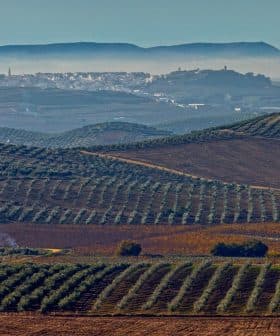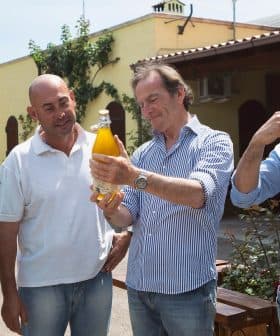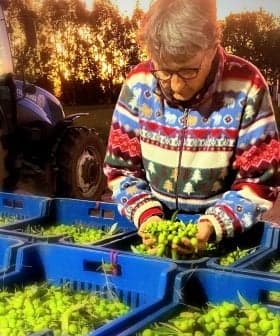Italian Olive Oil Production Off by Nearly a Third This Year, Forecasts Suggest
Italian olive oil production is expected to decrease by 30 percent in the current crop year, with the southern regions of Puglia, Calabria, and Sicily experiencing significant drops. Despite the decrease, the quality of the olive oil is expected to be high, and Coldiretti is encouraging Italians to support the industry by purchasing 100-percent Italian extra virgin olive oil.
Italian olive oil production will decrease by 30 percent in the current crop year, compared with the previous one.
According to the Institute of Services for the Agricultural and Food Market (Ismea) and the Unaprol consortia, the 2020/21 production is forecasted to reach 255,000 tons, down from the 336,000 tons recorded in the previous crop year.
The current relevant output decline is associated with an outstanding olive oil quality.
Officials said the decrease comes as a consequence of significantly lower production in the southern regions of the country, which traditionally produce the majority of Italy’s olive oil. Puglia alone usually accounts for half or more of the country’s output.
In Puglia, Calabria and Sicily, Ismea recorded production decreases of 43 percent, 38 percent and 15 percent, respectively. The unusual weather conditions that hit the southern regions, many producers heading into an off-year of the trees’ alternate bearing cycles, and the growing impact of Xylella fastidiosa in Puglia have all contributed to the sizable decrease.
See Also:2020 Harvest UpdatesThe numbers show Puglia’s output reaching 121,161 tons (194,000 in the previous season), followed by 32,005 tons in Calabria and 29,200 tons in Sicily. According to the Apulian branch of the farmer association Coldiretti, the prolonged drought and bad weather reduced production in some inland farming areas by as much as 60 percent.
“The current relevant output decline is associated with an outstanding olive oil quality,” added Savino Muraglia, the president of Coldiretti Puglia, emphasizing how diminished production could favor a price increase in the markets.
In the central and northern regions of Italy, olive growers have experienced a completely different type of season, with production outputs increasing in a number of places.
According to the official figures published by Ismea, Lazio has seen its output grow by eight percent to almost 12,000 tons; Tuscany experienced a 31-percent increase, exceeding 13,000 tons; producers in Umbria saw a 70-percent increase, with production reaching 6,500 tons; and the yield in Liguria doubled to 2,895 tons.
See Also:The Best Italian Olive OilsThe Coldiretti Liguria branch has emphasized the flipside of this year’s lower yield:
“Generally speaking, we expect the new season Italian olive oil to be of the best quality thanks to the perfect flowering, no adverse weather conditions and the rare modest attacks of the fruit fly,” Ismea wrote.
According to Coldiretti the significant production decrease is “worrying” in 2020, a year during which Italian families have increasingly purchased food items of the typical Mediterranean diet.
“In Italy, nine families out of ten consume extra virgin olive oil every day, with a growing attention to the quality of the product,” Coldiretti wrote. “Italy is the most relevant consumer in the world when it comes to olive oil, with 504 million kilograms (556,000 tons) consumed on average annually in the last five years.”
To sustain the Italian product in the difficult times caused by the Covid-19 pandemic, Coldiretti once again asked Italians to buy 100-percent Italian extra virgin olive oil, while being wary of products being sold at very low prices.









